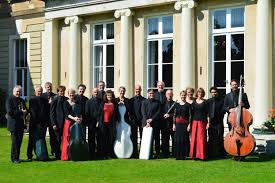Christ Church, St Leonards on Sea, Saturday 8 February 2020
Marcio da Silva loves pushing the boundaries and last weekend brought us not only very rare early opera but a genuine attempt to stage them by candlelight within the vastness of Christ Church. Candlelit Christmases are normally a discrete compromise to allow the audience to see their song sheets even if there are a number of decorative candles close to the choir. This was something different. We were in near total darkness – no hope of reading the programme notes – while the shadows across the performing area raised effectively ghostly images as the story lines unfolded. This was often remarkably effective, though the use of dark costumes in the second half made the characters more difficult to see.
All three of the works have specific spiritual underpinning. Caccini’s L’Euridice – normally accepted as the first full opera – mirrors the concept of the resurrection, when Alexander Gebhard’s movingly sung Orfeo persuades Pluto to return Euridice to life again. It is interesting that this version omits the normal ‘no turning back’ incidents which imply Orfeo’s weakness, rather than his ability to stand up to the gods.
Caccini’s version of the story follows the Greek model where most of the action happens off stage and we hear more from Orfeo’s friends than we do from the protagonists. This is even more obvious in Carisssimi’s two brief oratorios Jonas and Jephte. Both are sung in Latin and rely heavily on a triple narrator and a more prominent chorus. Samuel Kibble had proved himself a fine Arcetro in L’Euridice but was somewhat at a loss during the long sections of narrative during Jonas. Surprisingly Jephtha’s daughter – finely sung by Ciera Cope – is given far more to do by Carissimi with little real focus on the emotional effect upon Jephtha himself. One only has to compare Handel’s magnificent and heart-rending approach a century later to realise what is missing here.
However, Carissimi makes up for this in the quality and depth of his choral writing. The final chorus brought us the best music of the evening and a startling hint of what was to come over the next century.
The instrumental forces were as telling as ever, with the constant changes of texture and tone particularly impressive, bringing percussion for the peasants and the organ for the gods. Marcio da Silva was everywhere, singing, playing guitar, recorder and side drum. It was noteworthy that he trusts his fellow musicians enough to be able to leave the ensemble to themselves while he is singing or simply sorting out something off stage. This really is an ensemble working at its best.

